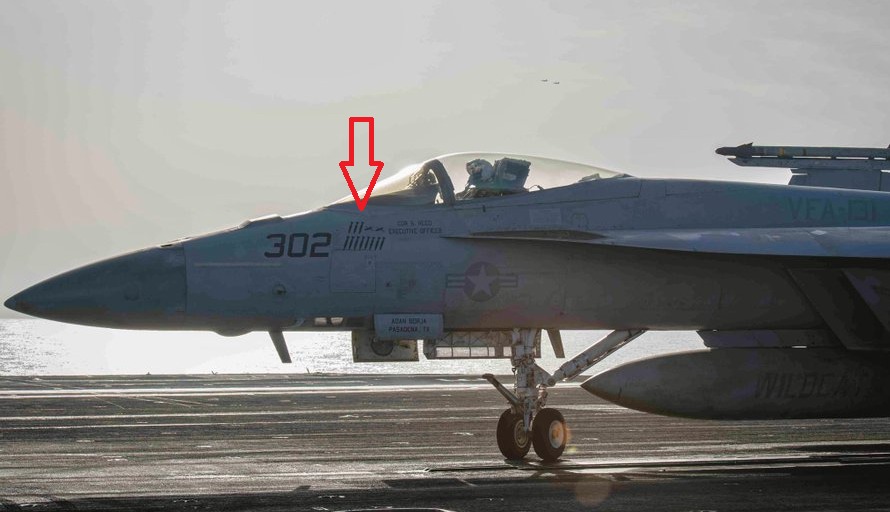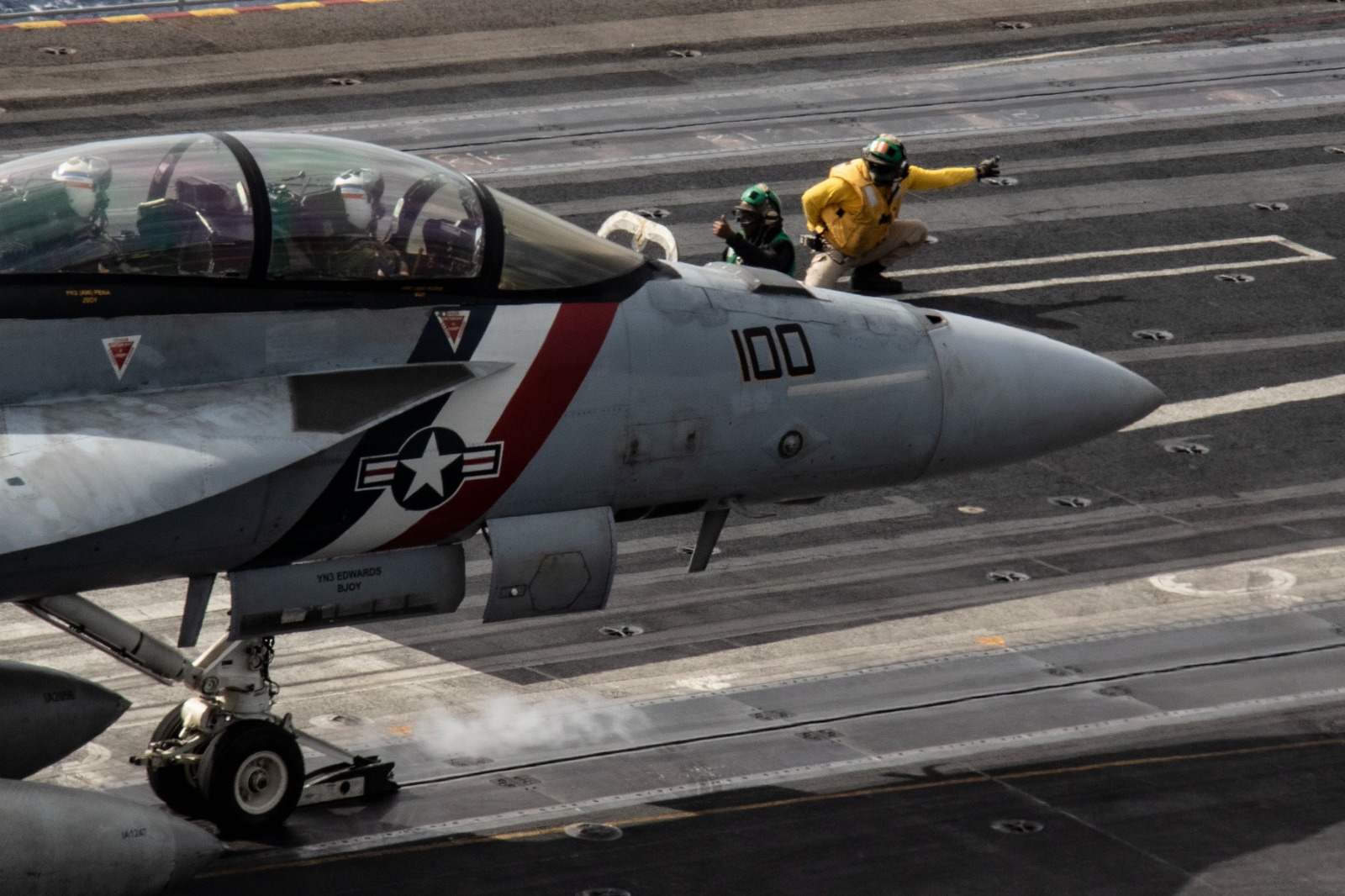The star aircraft of the Top Gun Maverick has new aerial kills to flaunt. The new markings on the US Navy’s F/A-18E/F Super Hornets onboard supercarrier USS Dwight D. Eisenhower ‘IKE’ stationed in the Gulf of Aden marks the knocking down of Houthi drones.
US Launches Hypersonic Missile In China’s ‘Red Zone’; B-52 Bomber Test-Fires AGM-183A ARRW From Guam
The warships deployed in the region traditionally have similar markings to commemorate their killings. The shadowy figures are being stenciled into the naval vessels. However, it is the first time that such figures are seen on fighter jets.
The Super Hornets have been deployed at the front line of the United States and its allies’ response to the attacks in the Red Sea by Iran-backed Houthi rebels in Yemen.
The Houthis have been attacking merchant ships in this passageway, forcing shipping companies to look for alternate shipping routes. The Red Sea has been vital for the global economy as, according to the United Nations Conference on Trade and Development, 12 percent of global trade passes through it every year.
F/A-18 Super Hornets from the Eisenhower Carrier Strike Group were deployed to counter the attacks on December 26, 2023. The fighter jets had to go up against attacks from drones and land attack cruise missiles fired by Houthis.
A few days later, on December 31, 2023, MH-60S and MH-60R helicopters from the USS Eisenhower and USS Gravely also saw action, sinking three Houthi small boats that had fired at the helicopters.

Super Hornets vs Drones
The F/A-18 Super Hornets of the USS Eisenhower Carrier Strike Group intervened and worked alongside the Arleigh-Burke class guided missile destroyers USS Gravely, USS Laboon, USS Mason, and the Royal Navy’s Type 45 guided missile destroyer HMS Diamond.
As a result of this combined effort, 18 one-way attack UAVs, two anti-ship cruise missiles, and one anti-ship ballistic missile were shot down.
This was the second time that the F/A-18E/F scored an air kill, the first one against Syrian Su-22 in 2017.
The APG-79 AESA radar allows the F/A-18 to pick up small targets like drones and cruise missiles. It can also pass the targeting data to either its air-to-air missiles or other air, land, and maritime assets in the area. The Super Hornets likely deployed their AIM-9X Sidewinder missiles or, if the infra-red signature was too small, AIM-120 AMRAAM radar-guided air-to-air missiles to swat down the drones or cruise missiles.
On January 11, the United States and several partner nations struck targets in Yemen in response to Houthi missile and drone attacks on merchant and naval shipping in the Red Sea. Apart from other aircraft, the Super Hornet from the USS Eisenhower and Typhoon also joined the strike.
The US Navy posted an image of operations on the ‘IKE’ depicting its Super Hornets with the silhouettes of Houthi drones and bombs that symbolize successful air-to-ground strikes. The drone silhouette resembles that of the one-way attack drones from the ‘Sammad family’ that the Houthis have been deploying for years now.
Even in March, the attacks from Houthi rebels are unrelenting. The group fired 28 drones on March 9 at targets around the Bab el-Mandeb Strait, separating the Red Sea from the Gulf of Aden. A statement from the US Central Command said that none of the drones hit their mark and were shot down by Allied ships and aircraft.
A release from France’s Ministry of Defense said that the French fighters were also deployed to counter the drones. These could be the French Mirage 2000s or Rafales, which could have been deployed from the country’s forward base in Djibouti.

While the allied forces have been striking military targets in the region, the defense against drones and missiles from the rebels has been the responsibility of Eisenhower’s air wing.
A recent BBC report from the deck of Eisenhower reported that UUVs are the latest threat. It says the F-18 jets on board the carrier have recently destroyed UUVs before they could be launched. Captain Wroe from the carrier is quoted in the report saying that the Houthis have posed the greatest challenge to the US Navy in recent history.
The US Navy assets are fired upon every day. The Super Hornets fly a dozen sorties daily. The report also describes the painted silhouettes of the bombs the fighter jets have dropped, the radar stations destroyed, and the drones they’ve shot down from the air. The fighter jets have already fired more than 300 bombs and missiles.
The crisis has been ongoing since October 2023, and no end is in sight. The US assets are going to be located in the region shortly. It remains to be seen how it will counter the Houthi threat. In the long run, shooting down cheap drones with expensive missiles will not be a good bargain.
- Ritu Sharma has been a journalist for over a decade, writing on defense, foreign affairs, and nuclear technology.
- The author can be reached at ritu.sharma (at) mail.com
- Follow EurAsian Times on Google News




